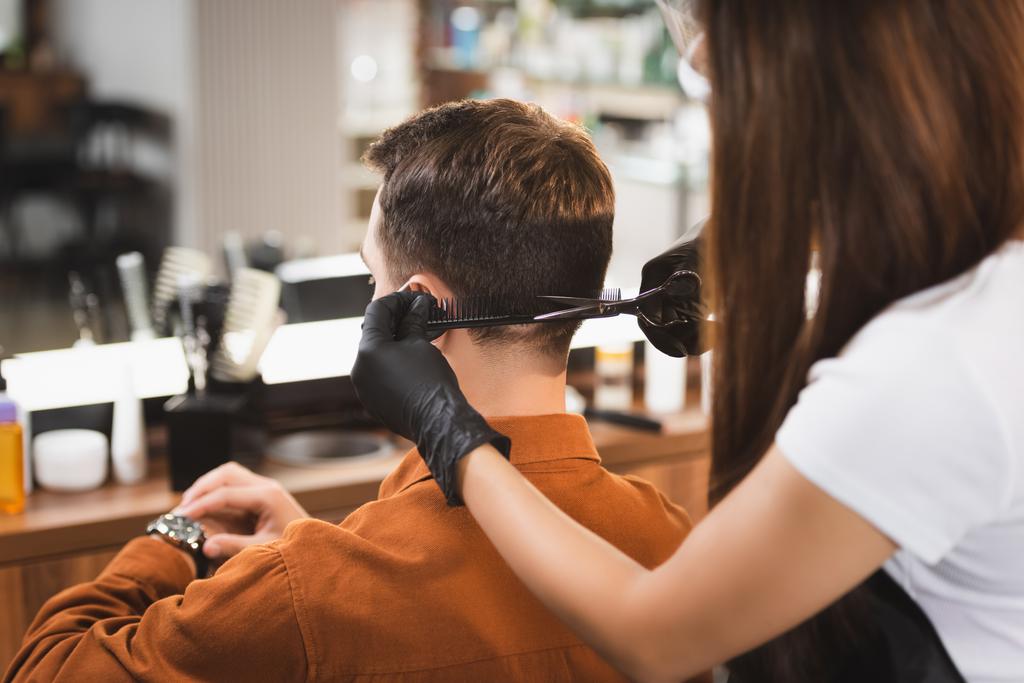
Hair appointments can bring a mix of excitement and nerves, especially if you’re diving into the world of short hairstyles for the first time. Bobs, pixies, and shags are undeniably trendy, inspiring many to take the plunge. But what happens if your bold haircut doesn’t live up to your expectations?
First, know this: It’s completely normal to feel upset about a cut that doesn’t match your vision. Hair can be a significant part of how we express ourselves, and a change we’re unhappy with can feel deeply personal. “Our hair is one of the first things people notice about us,” says Jenny Mahlum, EdM, LMSW, an integrative psychotherapist at New York Counseling. “In a society that emphasizes appearance, dissatisfaction with your hair can impact your body image and mental health.”
Even if it feels devastating in the moment, a less-than-perfect cut isn’t the end of the world. There are strategies to help you embrace the change, feel more comfortable in your own skin, and even gain insights about yourself in the process. Here’s how to navigate the fallout of a haircut gone wrong.
Give It Time to Sink In
The shock of a dramatic hair change can take time to process. If your initial reaction to your new look is negative, resist the urge to panic. Instead, give yourself a few days—or even a week—to adjust. According to Mary Poffenroth, PhD, a biopsychologist and author of A Brave New You, your brain needs time to adapt to a major change in appearance.
“It can take up to 21 days for your brain’s mirror neurons, which help with self-recognition, to adjust to a new visual stimulus,” Dr. Poffenroth explains. During this period, your amygdala (the part of your brain responsible for processing emotions) gradually stops treating the change as a threat. So while the cut might feel like a shock at first, your reaction will likely soften with time.
In the meantime, consider writing a list of qualities you love about yourself that have nothing to do with your looks, Mahlum suggests. Whether it’s your sense of humor or your cooking skills, focusing on your strengths can help remind you that your value goes far beyond your hairstyle.
Avoid Overanalyzing in Front of the Mirror
If you’re spiraling over your haircut, spending hours critiquing it in the mirror will only make you feel worse. Instead, distract yourself with activities that bring you joy, whether it’s painting, working out, or spending time with friends. These moments can serve as a reminder that your identity is multifaceted and not defined by your appearance.
If self-distraction isn’t cutting it, try practicing self-compassion. Ask yourself how you’d respond if a friend were in your position. “Would you judge them or stop caring about them because of a haircut?” Mahlum asks. Probably not, so extend that same kindness to yourself. “The people who truly matter in your life won’t change their feelings about you because of your hair.”
Plan for Comments and Questions
Dramatic hair changes often invite attention and questions from others, which can feel overwhelming if you’re unhappy with your cut. To ease potential awkwardness, prepare a go-to response that shuts down the conversation.
For example, if someone says, “Wow, you cut your hair!” you can confidently reply, “Yep, I did!” and then steer the discussion elsewhere. If they ask for your opinion, feel free to keep it neutral with something like, “I’m still getting used to it.” You don’t owe anyone an in-depth explanation—especially if talking about it makes you feel worse.
Experiment With Styling Options
If you’re not a fan of your current cut, see it as an opportunity to experiment with new styles. Hairstylist Jennifer Korab, founder of Renaissance Salon & Spa in New Jersey, suggests trying different products or techniques to bring out the best in your new look.
For instance, adding texture with sea salt spray or changing the way you part your hair can make a big difference. And if you’re unsure how to style it, don’t hesitate to reach out to your stylist for tips or adjustments. “We’re here to ensure you feel good about your look,” Korab says.
Accessories can also be a lifesaver during this period. Scarves, hats, and clips can add flair and help you feel more confident as you navigate this transitional phase.
Focus on Hair Health
If your end goal is to grow your hair out, focusing on its health can make the process more enjoyable. Korab recommends using a deep conditioning treatment once a week to keep your hair hydrated and shiny. Healthy hair not only looks better but is also easier to style, which can boost your confidence while you wait for it to grow.
Additionally, embrace small self-care rituals, like a luxurious shampoo session or an “everything shower,” to help you feel pampered. These moments of care can serve as a reminder that beauty is about how you feel as much as how you look.
The Bigger Picture
When all else fails, remember: Your hair doesn’t define you. It doesn’t diminish your intelligence, your talents, or your personality. And most importantly, it’s temporary.
If you give it some time and effort, you might end up loving—or at least liking—your new haircut. And if not, your hair will grow back before you know it. In the meantime, use the experience to practice self-compassion and explore different ways to express yourself.
You are so much more than a single haircut. And the best part? There’s always another chance to try something new.